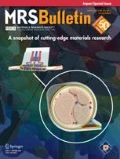
An electrocatalyst using low-cost and abundant materials with an interface engineering approach enables the electrolysis of water with high activity and stability. Image Credit: Pravin Babar, KAUST.
As a carbon–neutral and renewable source of sustainable and clean energy, electrochemically sourced hydrogen from water splitting offers a promising path. However, there are significant energy and cost barriers for this technology. Electrode reactions of the water electrolyzer at the anode and cathode occur through the oxygen evolution reaction (OER) and the hydrogen evolution reaction (HER), respectively, and involve multi-electron transfer steps. This hugely increases the potential input required to achieve coherent water electrolysis, thus raising the energy and economic costs.
The state-of-the-art electrocatalysts currently employed to catalyze the HER and OER require precious metals like Pt and Ir, which have high cost, low abundancy, and insufficient durability. Inexpensive and abundant transition-metal-based electrocatalysts are being explored as efficient and stable alternatives for overall water splitting by a research team from King Abdullah University of Science and Technology (KAUST), Saudi Arabia, and Chonnam National University, South Korea, led by Cafer Yavuz of KAUST.
Cobalt–iron (Co–Fe) hydroxide electrocatalyst systems have plentiful active sites and offer synergistic charge transfer between the bimetallic centers that lead to excellent catalytic activity. However, there remains much scope for improvement using surface modification. In a recent study published in Cell Reports Physical Science (https://doi.org/10.1016/j.xcrp.2022.100762), the researchers reported interface engineering to regulate the surface properties of the electrocatalyst and improve performance via synergism between a Co–Fe hydroxide and an iron oxyhydroxide.
A composite electrocatalyst was fabricated by anchoring iron oxyhydroxide nanoparticles onto Co–Fe hydroxide vertical nanosheets that were directly grown on a three-dimensional conductive nickel foam substrate. The deposition of FeOOH leads to no change in the crystal structure of Co–Fe–OH but it reduces crystallinity, as detected by x-ray diffraction. The study of the electronic interaction between the two interfaces using x-ray photoelectron spectroscopy suggested increased oxygen vacancy and charge-transfer dynamics, which leads to improved intermediate adsorption and overall efficiency. Electron microscopy revealed a low crystallinity and uniformly distributed heterostructure of FeOOH over Co–Fe–OH nanosheets.
The OER activity evaluated for this catalyst in 1 M KOH electrolyte is better as it demands less overpotential above the theoretically required voltage of 1.23 V (only 200 mV above 1.23 V to achieve a 50 mA cm−2 high current density) as compared to a standard RuO2 catalyst (250 mV at 50 mA cm−2 current density). The slope of Tafel plots in the overpotential region used to identify the kinetics of a catalyst was smaller for Co–Fe–OH@FeOOH, thus suggesting a higher current rise for less overpotential requirement. In long-term durability tests, the catalyst retained a stable performance.
Improved HER activity was also observed for this catalyst with a 145-mV overpotential requirement at 10 mA cm−2 current density. The catalyst was found to have a high turnover frequency and electrochemical surface area, confirming its enhanced intrinsic activity and profuse active sites developed via optimized heterointerface synthesis between iron oxyhydroxide nanoparticles and Co–Fe hydroxide vertical nanosheets.
The excellent electrochemical properties of Co–Fe–OH@FeOOH prompted its utilization as a bifunctional electrocatalyst for overall water splitting. The cell constructed with this catalyst as both the working electrodes operated at a low voltage of 1.56 V at 10 mA cm−2 current density and remained fairly stable during long operation hours.
According to the researchers, the nanosheet-nanoparticle assembly exposes more active sites. The strong electronic interaction between Co–Fe–OH and FeOOH with improved mass transfer and intrinsic catalytic activity leads to tremendous improvement in performance. This study highlights the advantage of the strategic introduction of heterogenous interfaces while designing a bifunctional electrocatalyst for water splitting.
The research team plans to evaluate the integration of their electrocatalyst in a polymer electrolyte membrane water electrolyzer to explore its commercial viability.
Chetna Madan
Author information
Authors and Affiliations
Corresponding author
Rights and permissions
About this article
Cite this article
Madan, C. Interface engineering of Co–Fe hydroxide and FeOOH facilitates low overpotential water electrolysis. MRS Bulletin 47, 450–451 (2022). https://doi.org/10.1557/s43577-022-00334-1
Published:
Issue Date:
DOI: https://doi.org/10.1557/s43577-022-00334-1

